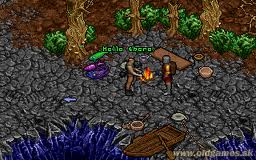
Project Ara’s first developer conference is slated for April 15 through the 16th, less than a week away now. In preparation for the event, Google officially unveiled the first release of its MDK (modular development kit) last night, giving us a few new details on what to expect from the modular phone project.
As we already knew, Project Ara’s core component is the endoskeleton (endo), the device’s frame which consists of multiple different plugs for connecting various kinds of modules. Of course part of the magic of Ara is that you don’t have to settle when it comes to the components found on your device, and the same goes for the form factor, as Ara comes in three different sizes: mini, medium and large. Each of these different size categories will also offer different layout possibilities for 3rd party components.
Ara comes in three different sizes: mini, medium and large
At least initially, Project Ara’s MDK is only officially supporting and giving specifications for mini and medium devices, though it says the larger form factor will be added in a “future release”.
So what else can we learn from the MDK guidelines? While the majority of the guide is clearly aimed at a developer audience, there are some important takeaways here for those simply wondering what to expect from the platform.

Cameras, processors and screens — oh my!
The new Ara MDK goes into a lot of specifics about the guidelines behind individual components, giving us a better idea of what Ara can and can’t do. On the device’s rear, the sky is pretty much the limits — within reason. On the front, the main space-taker is the display, but there’s also an option to add a camera or even a physical keyboard.
How awesome would it be if RIM Blackberry built a physical keyboard module? But I digress.
So what kind of guidelines are we taking about here? While Google makes it clear that components can only adhere to certain dimensions for cameras, processor packages, displays and other core components, the MDK also opens the door to modules that think outside the box. As an example, the MDK mentions components like a pulse oximeter module for measuring blood oxygen saturation.
In other words, Project Ara will allow for true customization beyond just the basics like camera, RAM, processor and storage.

Magnetic force on the back, ball-springs on the front
Google has already touched on this subject a bit in the past, but the MDK gives additional clarification to how the modules will stay in place. On the rear of the endo, Ara will utilize electro-permanent magnets (EPM) that will have two selectable states: an attach state and a release state.
It’s important to note that switching from these states requires electrical power — but holding them in place doesn’t. Translation: your phone will need to be powered up in order to remove or add a component, which should help keep things in place.
On the front of the handset, Project Ara will rely on both EPM and a ball-spring plunger to ensure your screen and other components don’t fly off.

Design Language
Google is currently the only creator of Project Ara-compatible endos, but 3rd party developers will have the ability to create a wide variety of different modules. This might make you wonder how the design language will work, and whether your phone will end up looking like a mismatched mess — sort of like most of my Lego projects growing up.
The goal of the module aesthetic is to create a smooth, fat, pebble form
The good news is that Google seems to be thinking every step of Ara’s development through as carefully as possible, and design language is no exception. In the MDK, it is stated that the “goal of the module aesthetic is to create a smooth, fat, pebble form.”
The MDK says there are three key reasons for this pebble design:
- A softer form without sharp lines and edges is simple, iconic, and visually easy to understand.
- The shape enables modules to easily slide into a module slot.
- The form of the module is one that is friendly to hold and enjoyable to handle.
As for the material, color and finish of these components? Google’s MDK makes it clear that while they will be open to some flexibility here, there will be a specific set of CMF guidelines “provided in a future release”. Bottom-line, Google is working to define a design language that will keep your phones from looking terribly mismatched — at least that’s the goal.

Project Ara and Android
While it was pretty much a given that Project Ara would run on Google’s mobile OS, the MDK mentions that Ara phones will run Android and that just about any and all Android apps should be fully compatible with such devices.
The MDK doesn’t get into specifics about how Android will handle the constant change of components or the wide array of drivers potentially needed, but rest assured that Google is behind the scenes working on how to put it all together.

How Project Ara customization will work
Probably one of the most interesting parts of the MDK is about how consumers will purchase and customize their Project Ara phones. The MDK mentions that Google’s plan is to create an online marketplace, which could eventually even end up as part of the Play store. Here you’d be able to buy different modules and receive advice on installing and configuring them.
Google’s plan is to create an online marketplace for Project Ara
From the sounds of it, this could mean that all Project Ara 3rd party modules will actually be sold through a Google approved site. While this is speculation on our part, it could also mean that Google might offer self-installation of modules when you order your first phone.
As for when we’ll actually see the first Ara devices? The goal is early 2015, which isn’t all that far away. That said, don’t expect tons of modules or options right out the gate, but the idea of Project Ara is starting to look less like fiction and more like a doable reality.
For those interested in diving even deeper into the guidelines and specifications involved with Project Ara, you can get a hold of the MDK for yourself by heading on over to Google’s official Ara homepage.










 Carousel is an all-new social gallery app from Dropbox. / © Dropbox
Carousel is an all-new social gallery app from Dropbox. / © Dropbox Carousel is a gallery app with an instant messaging angle. / © Dropbox
Carousel is a gallery app with an instant messaging angle. / © Dropbox













